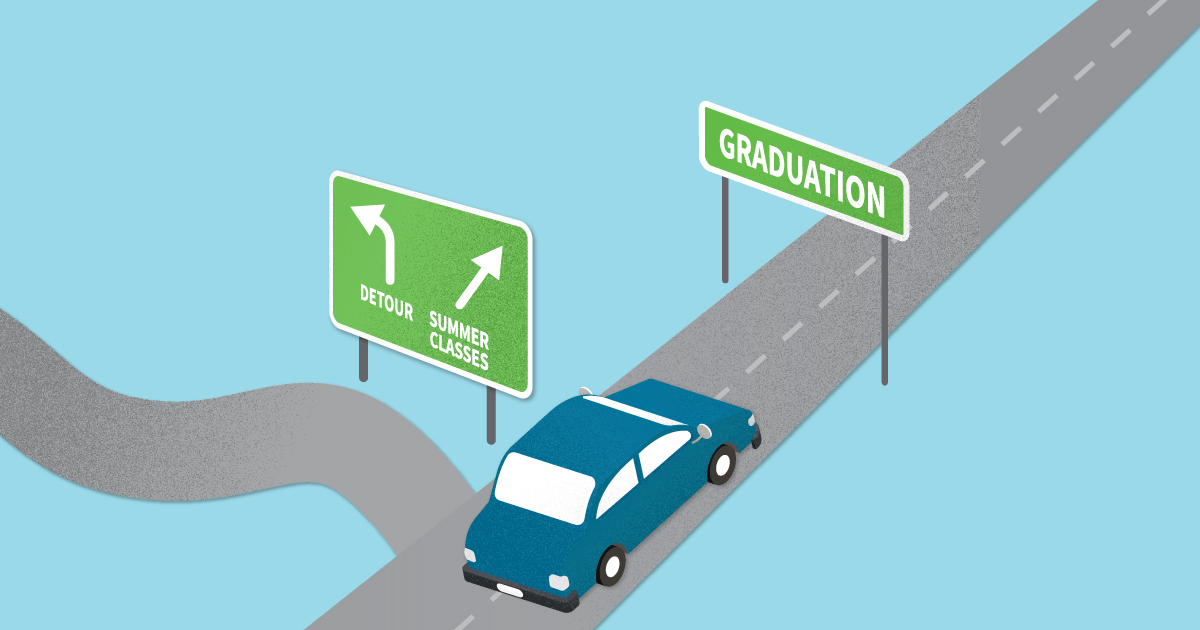Making Summer Pay Off
Using Behavioral Science to Encourage Postsecondary Summer Enrollment

For many low-income community college students, the road to graduation is challenging: Only 13 percent of entering students graduate within two years, and only 24 percent graduate within three. However, research has shown that students who enroll in summer courses are more likely to persist and graduate. Summer enrollees have the opportunity to earn credits and make progress toward a degree. The summer term also bridges the gap between the fall and spring semesters — a time of transition when many students drop out of college. Despite these benefits, most college students do not attend during the summer. How can postsecondary institutions encourage more students to enroll in summer courses? If more students do enroll, will they experience improved academic outcomes?
MDRC’s Encouraging Additional Summer Enrollment (EASE) project explores these questions by using insights from behavioral science to encourage more students to enroll in summer courses. In partnership with the Ohio Association of Community Colleges and four community colleges in Ohio, MDRC developed and rigorously evaluated two interventions to encourage summer enrollment:
-
The first intervention was an informational campaign of personalized student communications delivered by email and mail that incorporated various behavioral science principles. This campaign aimed to simplify academic, financial aid, and procedural information related to summer enrollment, remind students of that information, and motivate them to register for courses.
-
The second intervention was a similar informational campaign paired with a “last-dollar” tuition-assistance grant that covered the difference between students’ summer tuition and fees and any grant financial aid (such as Pell Grant funding) they had available for summer courses.
To test the effectiveness of the two interventions, MDRC randomly assigned first-year, low-income students enrolled in spring 2017 courses to (1) a group that received an informational campaign, (2) a group that received tuition assistance plus an informational campaign, or (3) a control group that received the colleges’ standard communications. The interventions launched in the spring 2017 semester to encourage enrollment for the summer 2017 term.
The study finds that both interventions — the informational campaign alone and the informational campaign plus tuition assistance — increased summer enrollment. The informational campaign increased summer enrollment by 5.5 percentage points, from 23.2 percent to 28.7 percent. The informational campaign plus tuition assistance was substantially more effective. It increased enrollment by 14.6 percentage points, from 23.2 percent to 37.8 percent. Both interventions also had positive, statistically significant effects on credit accumulation, an important indicator of progress toward a degree. Neither intervention had an effect on fall enrollment.







